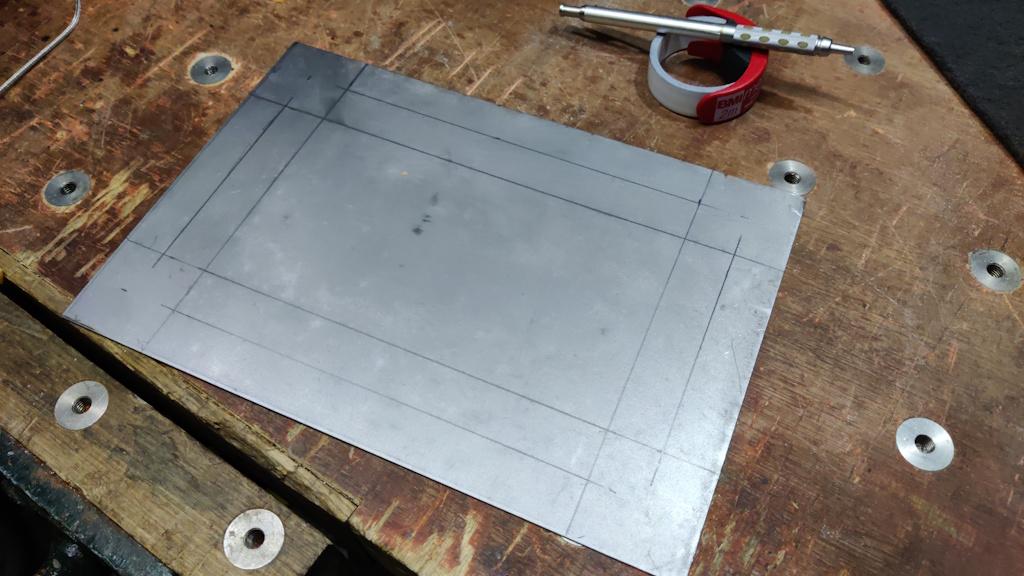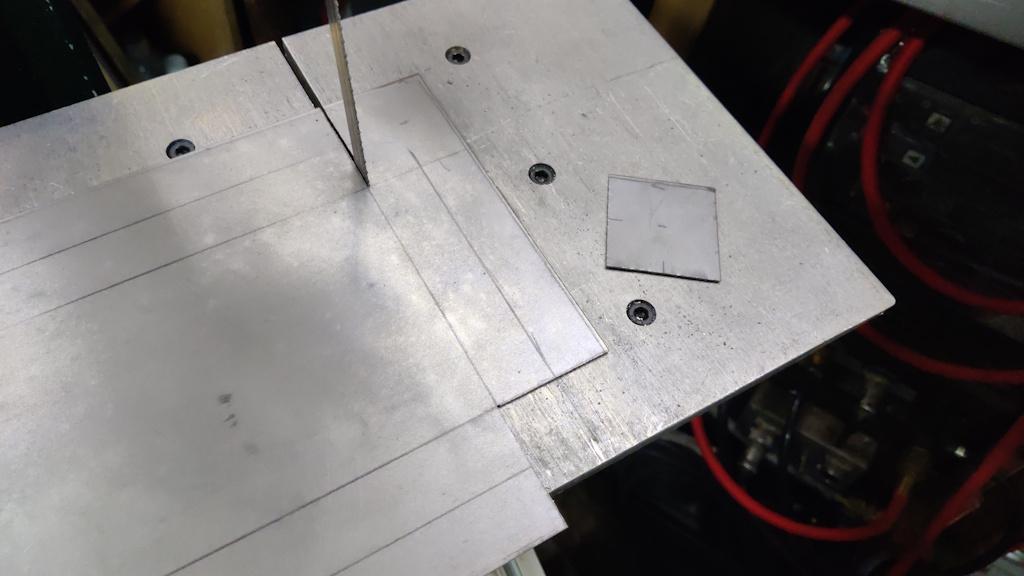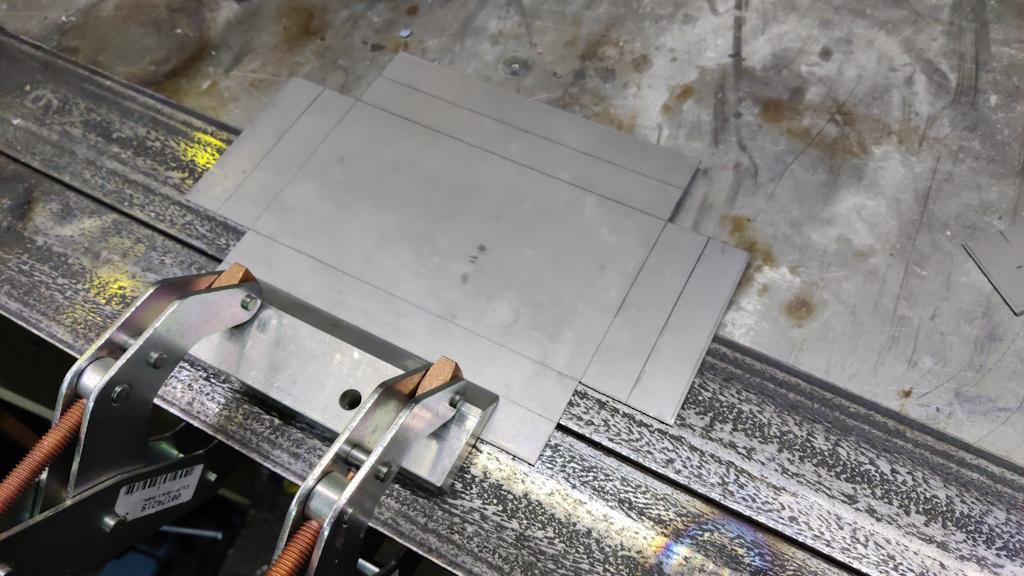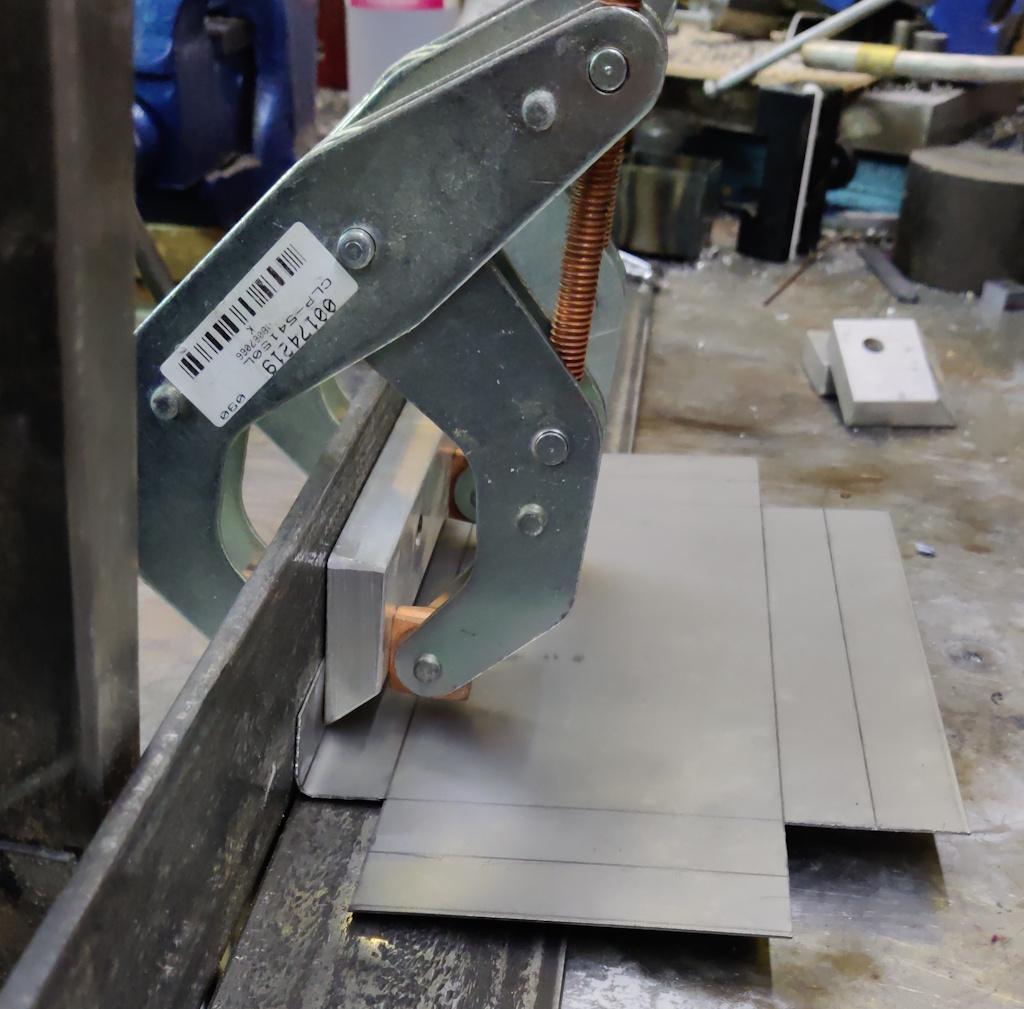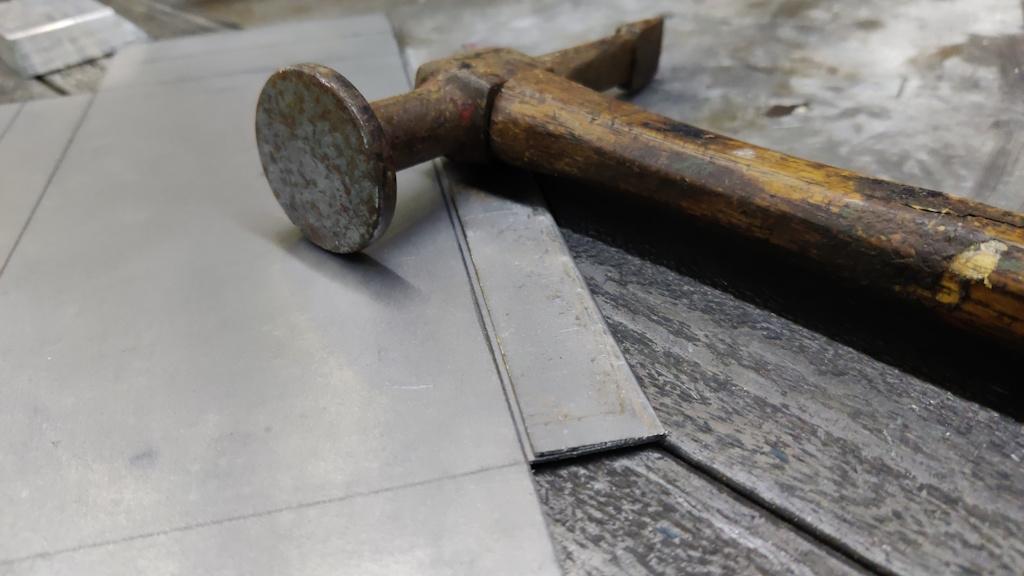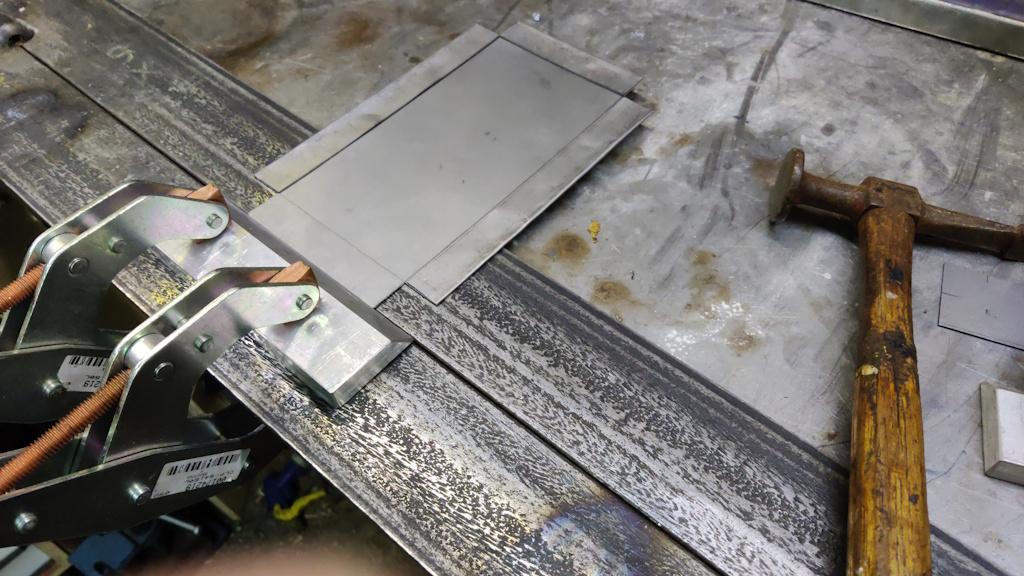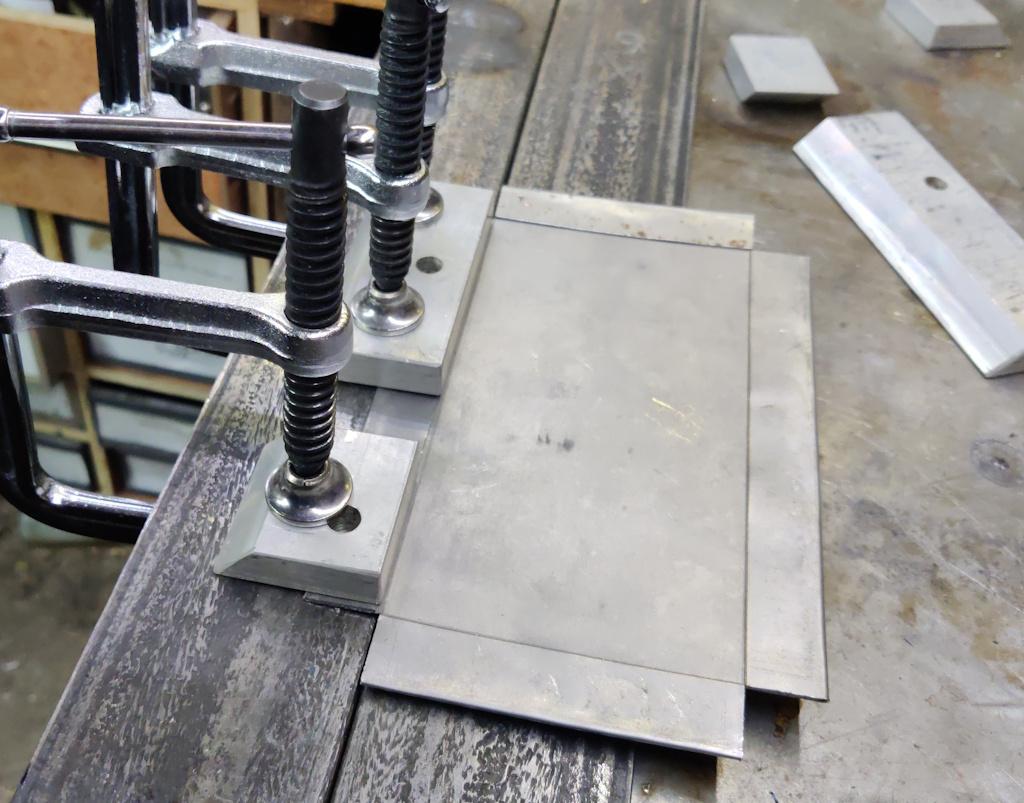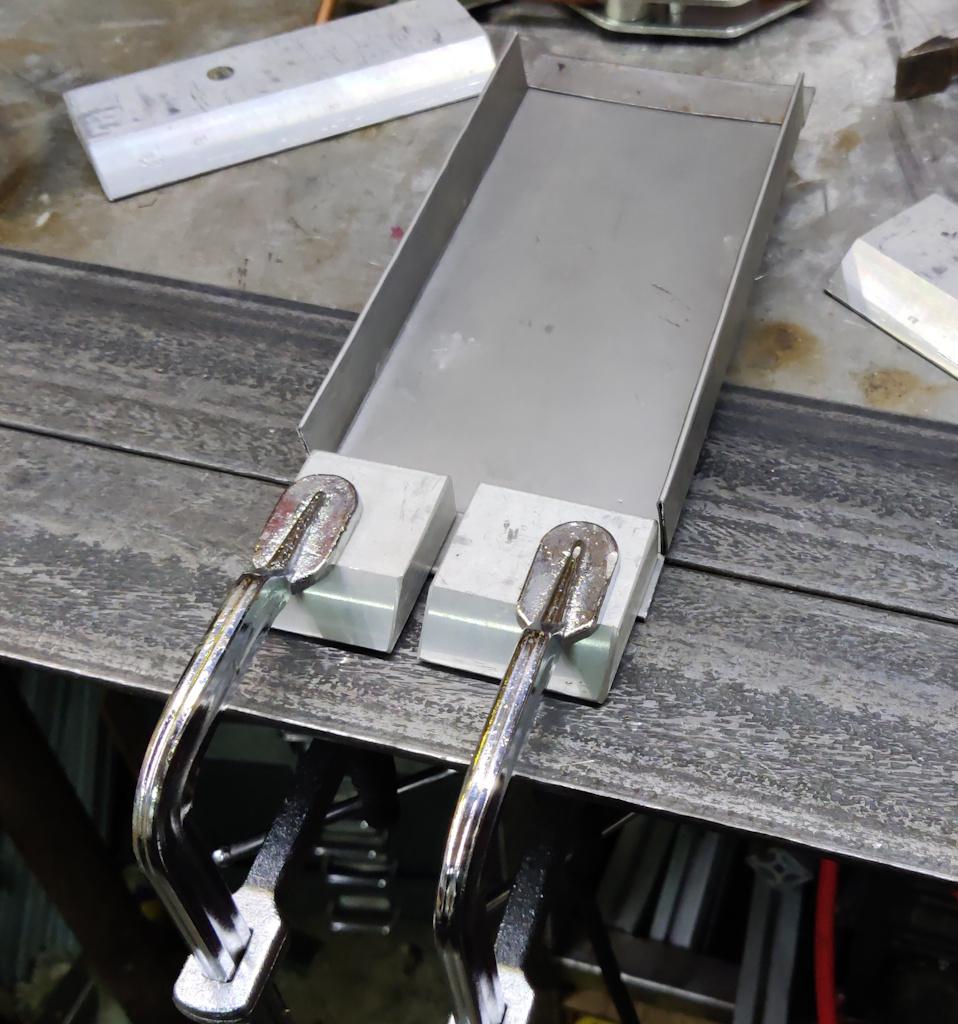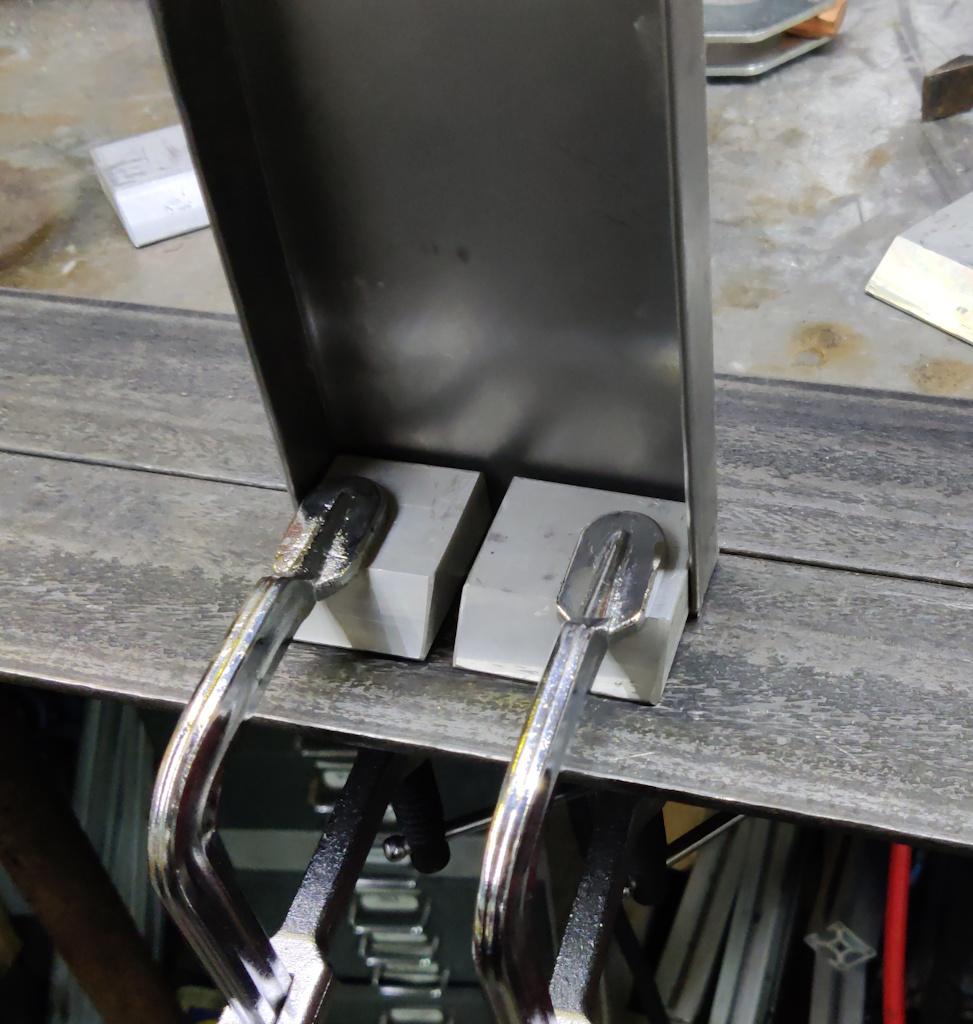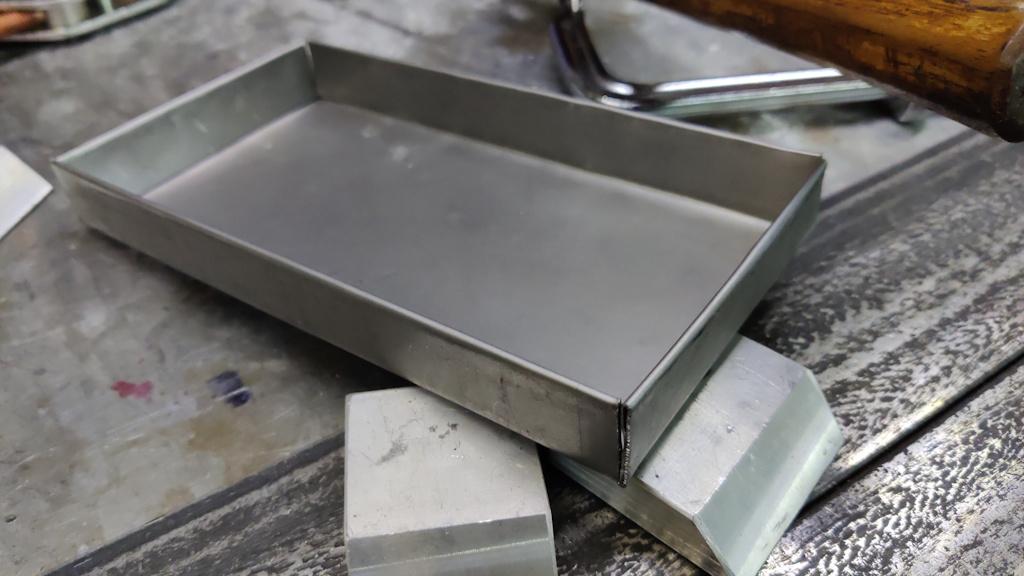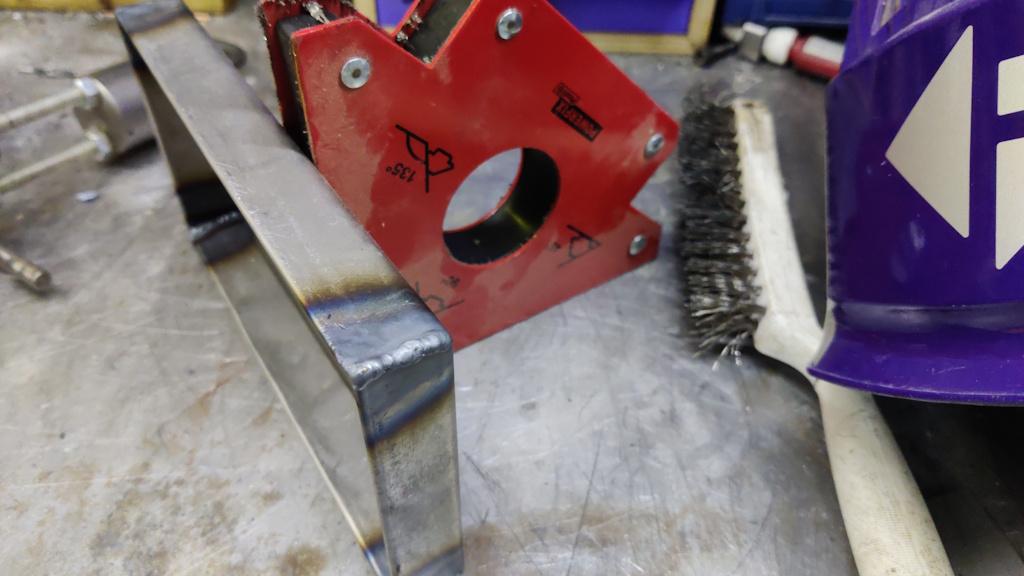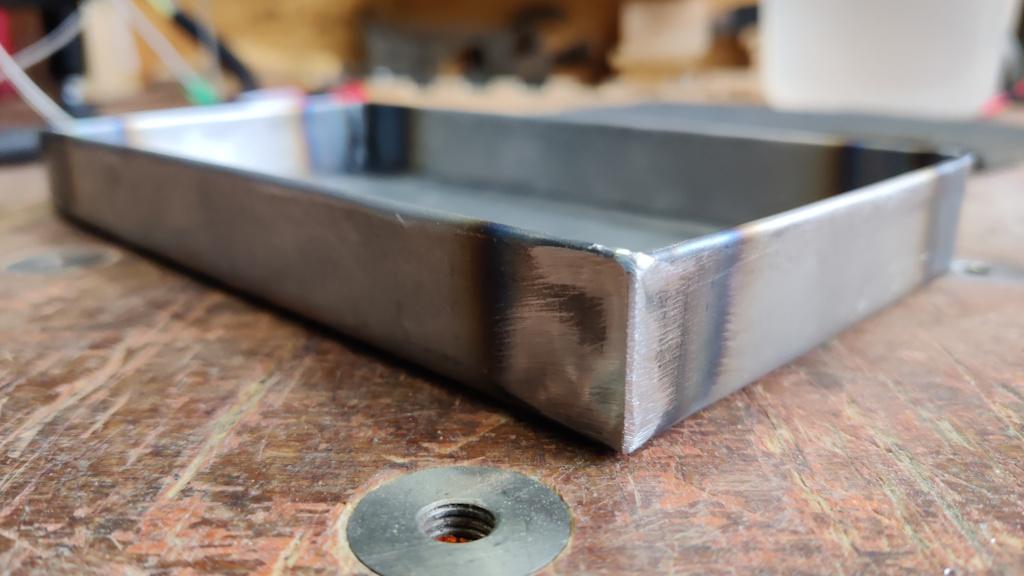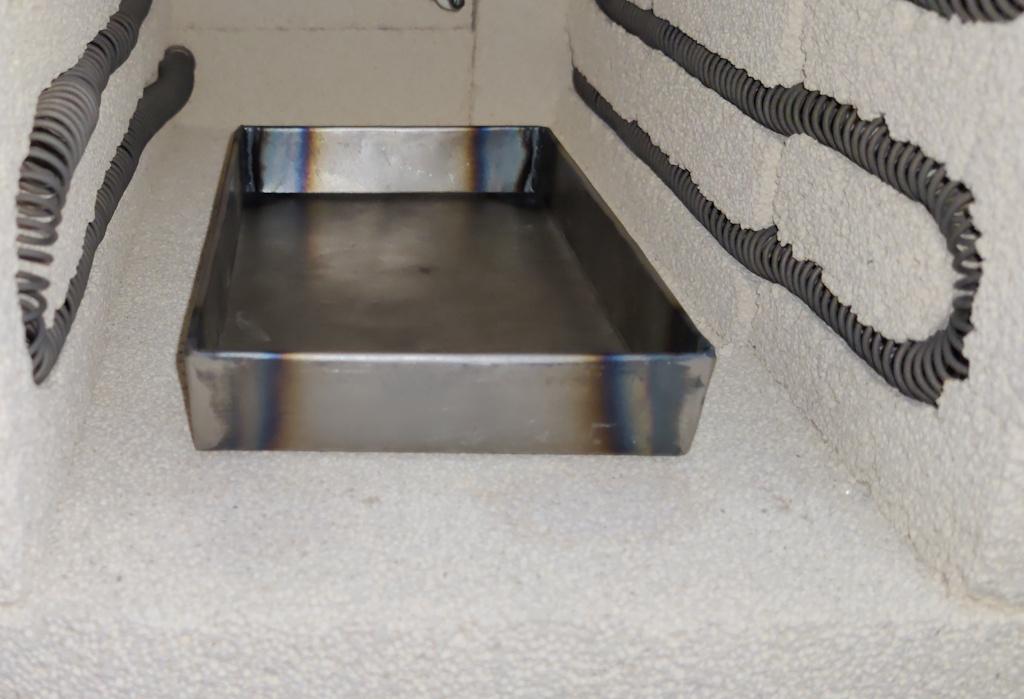Heat Treatment Oven Build Process
Page 34 of 35
Posted 21st February 2025
A bit of an aside for this afternoon. I had quite a few little off-cuts of sheet steel from making the control cabinet and the chamber. This is one of them:
The pencil marks were positioned based on a combination of what size I wanted the end result to be and what size I the off-cut was. I started by marking out the rectangle that's about 44 mm from the edge and then decided 44 mm was a bit much, so I added a second line, 22 mm from each edge.
With the pencil marks in place, I took it over to the home-made vertical saw table on the bandsaw and cut out the corners:
It was then time to get the sheet metal bender out. The first bend looked like this:
It probably would have been better to have a couple of clamping blocks so the ends were supported (which I did on the later bends) but it didn't seem to cause any problems. After the first bend:
I then dug out a recently acquired and rather shabby hammer (I'll give it some TLC at some point: it needs a new handle and a thorough de-rust) and battered the folded over bit flat:
There was then a bit of rinse and repeat...
... and some more folding...
... and some more folding...
... and some more folding:
All that folding resulted in this little steel tray:
Making the corners watertight involved the (very) hot melt glue gun...
... followed by a flap disc in the angry grinder to remove the squeeze-out and complete the tray:
The plan for this tray is for it to sit in the heat treatment oven thus:
Often when heat treating, I've wrapped parts in iron wire and covered them in a mixture of boric acid and meths (the iron wire being there to stop the boric acid falling off). The boric acid stops oxidation/scale building up on the part and can be cleaned relatively easily by dunking the part in boiling water after the quench. However, the boric acid mix results in a bit of a mess underneath the part on whatever base I'm using for blow-torch based heat treatment.
For doing it in the oven I thought it would be better to have a tray. I can fill the tray with boric acid/meths and bury the part in the mixture. All being well, most of the mix will stay in the tray rather than ending up all over the bottom of the oven. It will, of course, make it a little harder to grab hold of the part for quenching, but I'll see how I get on. I suspect the tray will suffer somewhat from repeated cycles up to around 800°C, but it took me less than an hour to make and I've got lots more off-cuts, so I can always knock up a few spares if necessary.
While I've been typing this, I've also idly wondered if it might be viable to fill the tray (or perhaps one with higher side walls) with argon and put the part in that inert gas environment. Argon is heavier than air, so assuming there isn't too much of a breeze blowing in the chamber, I'd hope that it would stay put in the tray rather than dissipating. Of course, if any colder air got into the chamber (or the argon heated faster than the air), then that might not stay true (argon's density drops from about 1.6 kg/m³ to about 0.5 kg/m³ as the temperature goes from 20°C to 700°C; air density drops from about 1.2 kg/m³ to about 0.35 kg/m³ over the same temperature span). In practice, I wouldn't be surprised if there's always some fresh (cooler) air fighting its way into the chamber through little gaps here and there and if that air doesn't get up to temperature by the time it reaches the argon, then the argon will head for the roof, but it's an interesting possibility anyway.
If it worked, it would make for a much cheaper inert environment that having to knock up some sort of gas feed into the top of the chamber and maintaining a constant flow. I think the best way to test that idea will be to fill a tray with argon (but no parts), check there's no oxygen by dunking a lit match just below the lip, then heat it up to 800°C, let it cool and repeat the match test. I'd be interested to know if anyone has tried this.
Worst case, I'll stick with the boric acid, which seems to work okay when I've used it before.
Page 34 of 35
This website is free and ad-free, but costs me money to run. If you'd like to support this site, please consider making a small donation or sending me a message to let me know what you liked or found useful.

 Return to main project page
Return to main project page